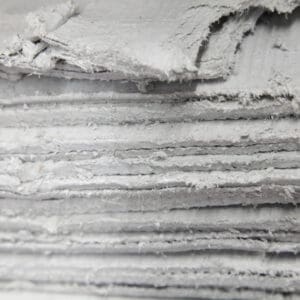What’s the Most Dangerous Asbestos?
 If you’ve already heard of asbestos, then there’s a good chance you know how dangerous it can be. However, you may not know that there’s more than one type of asbestos, or that they carry different levels of risk.
If you’ve already heard of asbestos, then there’s a good chance you know how dangerous it can be. However, you may not know that there’s more than one type of asbestos, or that they carry different levels of risk.
What Are the Different Types of Asbestos?
 There are six different types of asbestos: chrysotile, crocidolite, amosite, actinolite, anthophyllite and tremolite. Chrysotile consists of flexible, soft fibres and is classified as a serpentine asbestos. In contrast, the other five types of asbestos are made up of shorter, sharper fibres are recognised as amphibole asbestos.
There are six different types of asbestos: chrysotile, crocidolite, amosite, actinolite, anthophyllite and tremolite. Chrysotile consists of flexible, soft fibres and is classified as a serpentine asbestos. In contrast, the other five types of asbestos are made up of shorter, sharper fibres are recognised as amphibole asbestos.
Although all types of asbestos have been used commercially in the part, chrysotile, crocidolite, and amosite were most frequently used in the building and construction industries, as well as in the transport, textile, and automobile sectors.
You might recognise them from their commonly used names:
- Chrysotile – white asbestos
- Crocidolite – blue asbestos
- Amosite – brown asbestos
What Health Risks Does Asbestos Carry?
Asbestos is a known carcinogen, which means it promotes the formation of cancer in the body. It is particularly dangerous when the microscopic fibrils are released into the air and breathed into the lungs. When this happens, asbestos can cause a range of health problems, including lung scarring, lung plaques, lung cancer, asbestosis, and mesothelioma.
So, which type of asbestos is the most dangerous? Crocidolite (blue asbestos) and amosite (brown asbestos) are believed to be the most dangerous types of asbestos. This is because their short, sharp fibres can penetrate lung tissue relatively easily. Furthermore, these fibres are difficult to breathe out once they’ve been inhaled, which means the damage is difficult to prevent.
However, this doesn’t mean that chrysotile (white asbestos) should be considered safe. In fact, chrysotile is still a highly dangerous mineral and should not be used for any purpose in the UK.
Why Was Asbestos Banned in the UK?
 Blue and brown asbestos was banned in the UK in 1985, with white asbestos also being prohibited in 1999 because of how dangerous it is. Although asbestos hasn’t been used since these times, it remains present in buildings that were constructed before asbestos was banned. As a result, a large number of commercial and residential buildings in the UK still contain blue, brown, and white asbestos.
Blue and brown asbestos was banned in the UK in 1985, with white asbestos also being prohibited in 1999 because of how dangerous it is. Although asbestos hasn’t been used since these times, it remains present in buildings that were constructed before asbestos was banned. As a result, a large number of commercial and residential buildings in the UK still contain blue, brown, and white asbestos.
Although asbestos can be removed from buildings, this should only be done by experienced, licenced contractors, due to the health risks associated with handling asbestos.
